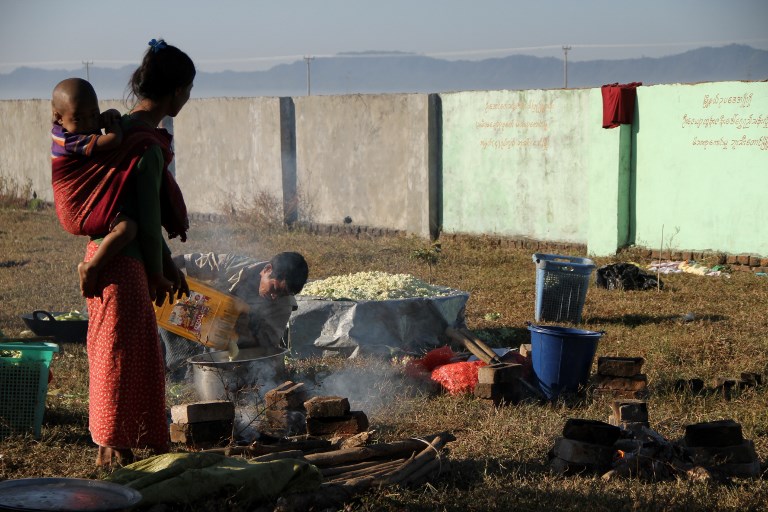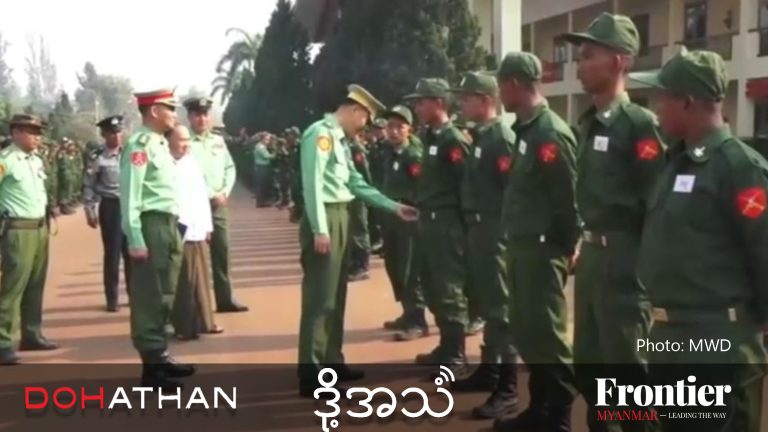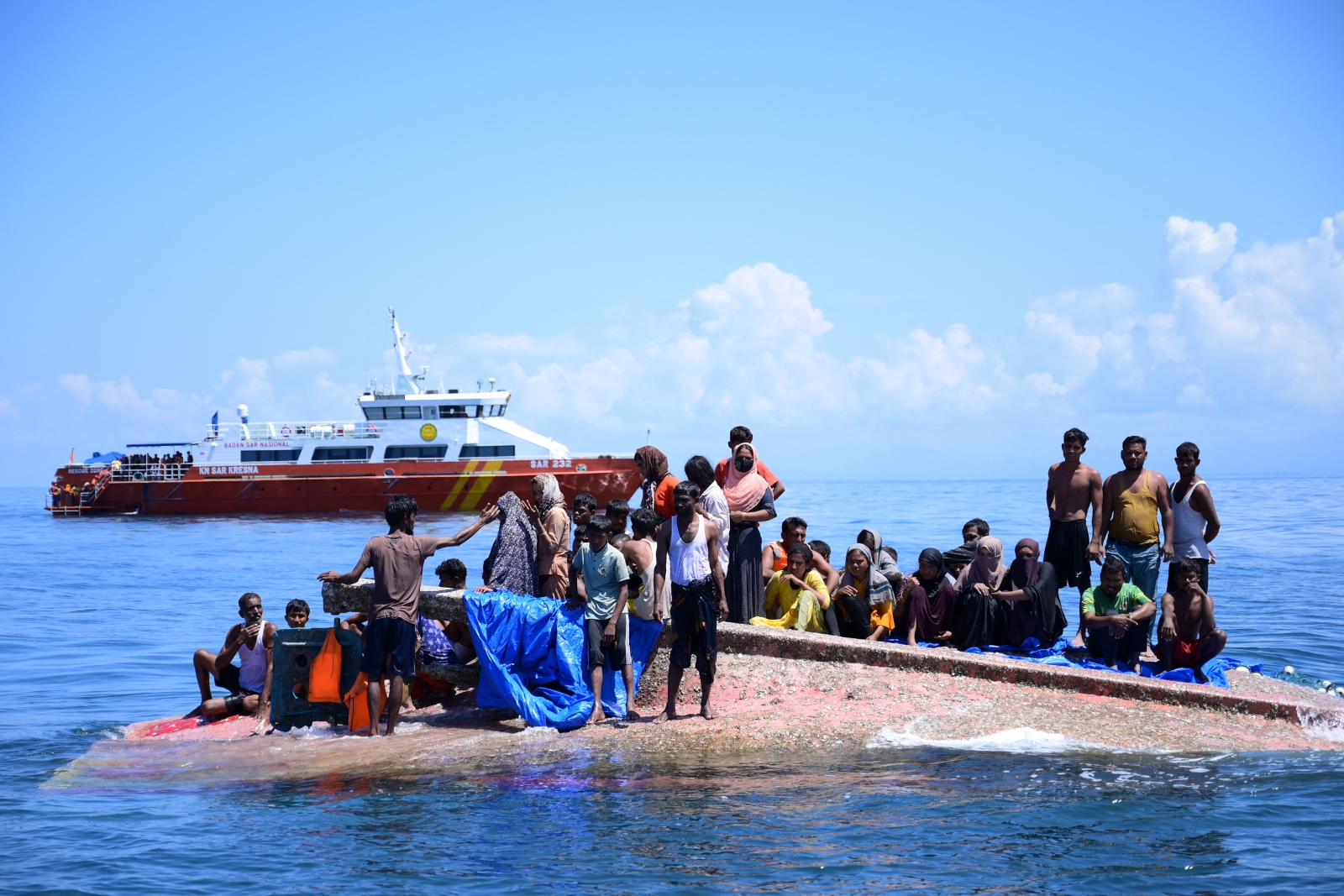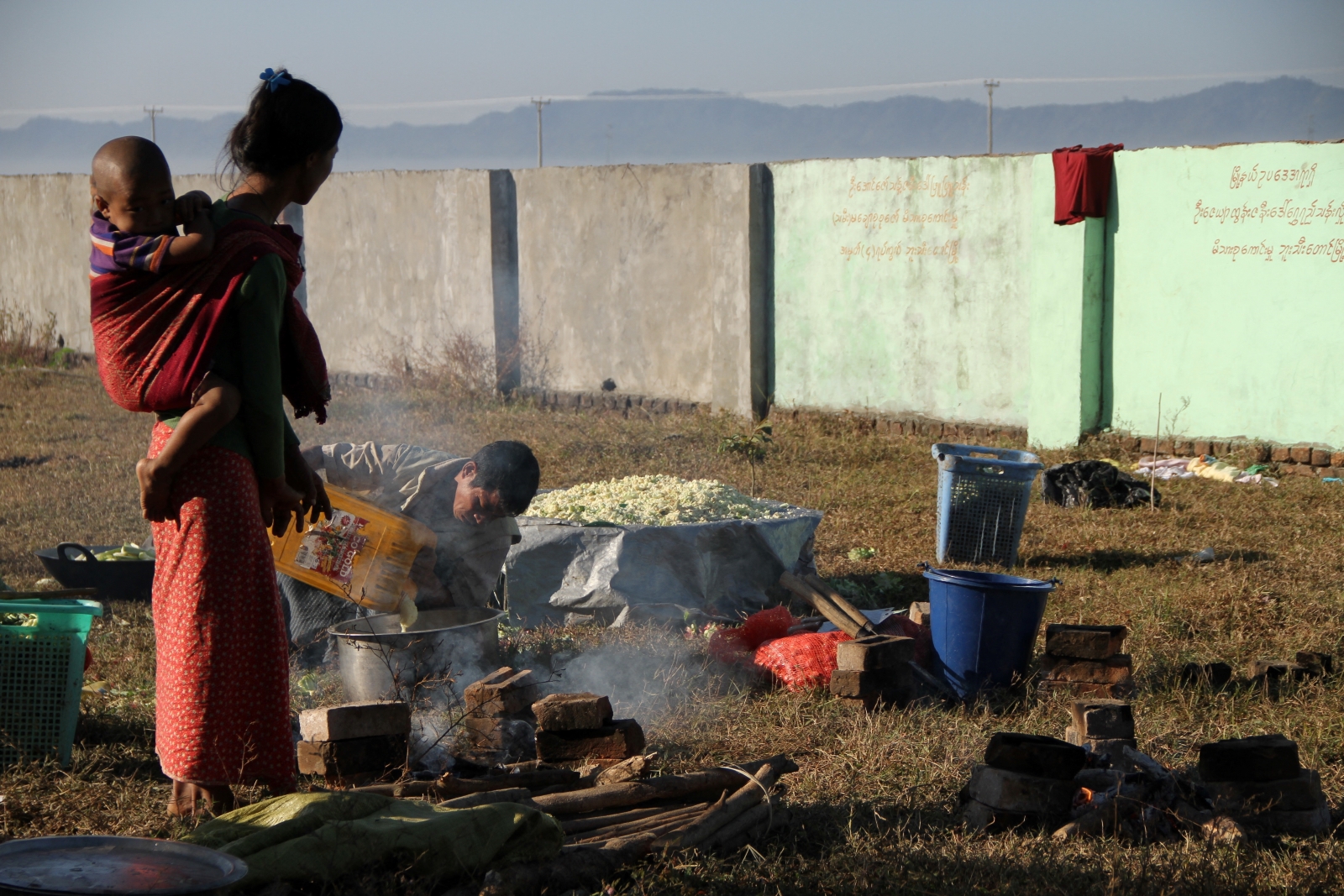By AFP
BUTHIDAUNG — As bullets smashed into the walls, the residents of Alecheung village jolted from their sleep and fled leaving everything behind, the civilian victims of a crackdown by Myanmar’s army on ethnic Rakhine militants in an area already concussed by violence.
“I just ran… I didn’t even have time to take my phone,” Ko Zaw Win, 22, told AFP on Friday from a makeshift camp in the grounds of a pagoda, a few kilometres from his village in restive Buthidaung District.
Rakhine State, which borders Bangladesh, is a cauldron of religious and ethnic hatreds.
In 2017, 720,000 Rohingya Muslims were expelled in a bloody army crackdown. United Nations investigators say that operation merits prosecution for genocide.
Now the majority ethnic Rakhine — who are Buddhist and who helped drive out the Rohingya — are in conflict with the same army they supported against their Muslim neighbours just 18 months ago.
On January 4 the Arakan Army (AA), a militant group espousing greater rights and autonomy for the Rakhine, killed 13 in raids on police border posts, prompting an army kickback.
The army says 13 AA militants have been killed in reprisals so far, while the UN says at least 5,200 people have been displaced by violence.
An accurate death toll, including any civilian casualties, is impossible to gauge in a zone in a near-blanket lockdown.
AFP reporters joined the first government-steered media visit to Buthidaung, one of the areas of restive northern Rakhine worst hit by the fresh violence.
The displaced from Alechaung, a village for ethnic Mro, a small, mainly Buddhist minority, fled two weeks ago.
“We ran for our lives,” said Ma Noe Zin Tun, 23, a primary school teacher, adding she still feels desperately insecure despite the shelter within the pagoda walls.
“We have heard gunfire from here as well. Fear is on my mind all the time,” she added.
Around 260 Mro were at the pagoda on Friday, many huddled round a huge rice cooker, wrapped in blankets.
“The fighting wasn’t far from us. Our school was even hit by bullets,” Ko Kyaw Kyaw Naing, 24, said.
Rohingya also still live in Buthidaung, marooned between hostile neighbours and the warring parties.
The media convoy also stopped at Thabyuchaung village, home to around 10,000 of the stateless minority, watched over by armed police laid on especially for the visit.
Kho Lar Myar, 74, said the fighting had not reached them yet but they are living in fear of AA.
“We’ll be killed if they come with guns,” he said.
Crucible of hate
The fighting has added a new, complex dimension to the troubles of a state that since 2012 has hosted religious and communal riots, the mass exodus of Rohingya, villages up in flames behind them, and killings across all ethnic lines.
“The conflict has entered a dangerous new phase in which ethnic divisions have more clearly been brought to the fore,” the International Crisis Group warned in a report this week.
The implosion of Rakhine has also undercut the push by Daw Aung San Suu Kyi’s civilian government to end the wars that have roiled Myanmar since its independence in 1948.
A major investment drive for the state by Myanmar’s government has left many Rakhine fearing they will be further sidelined as mainly Chinese companies carve up their state’s resources and ports.
While they helped drive out their Muslim neighbours, Rakhine still complain that they remain the bottom of the pile, as the plight of the Rohingya attracts aid and international focus.
Support for the Arakan Army is growing.
“We are proud of them as they are fighting for our land,” said Ko San Shwe, 32, a motorcycle taxi driver from Sittwe who lost his home in communal riots in 2012.
“The AA is a good organisation.”
Many people feel betrayed by a government, which has warned Rakhine against supporting the insurgents.
“We dare not talk openly,” one 58-year-old man told AFP in Sittwe, professing his support for the AA but preferring not to be named.
“We are afraid of being arrested.”







